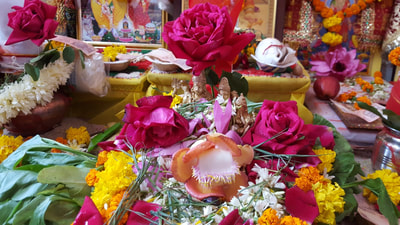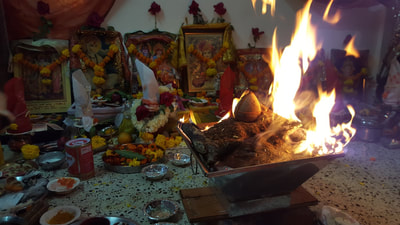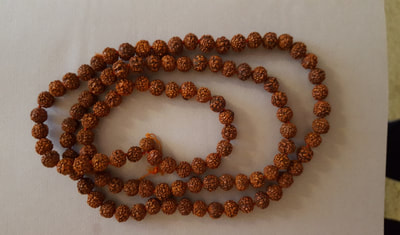|
Puja is one of the important parts of six daily karma (activities) in Hindu scriptures:
Essence of Puja (What) In Hinduism, gods/deities are worshiped as a practice or ritual. Puja is performed daily by family members in home and elaborate puja is conducted by pandit (aka purohit or priest) in home or temple by following various steps prescribed in Vedas.
Significance of Puja (Why) Daily Puja is not mere ritual but important step in progress of spiritual journey. Person observing regular puja with devotion may get following benefits:
Performing Puja (How) Simple puja is done by family members preferably in morning and evening hours. Timings: As per Hindu belief, day is divided in three parts viz. Sattvic* (4 to 8 in morning & evening), Rajasi* (8 to 12 in morning & evening) & Tamasic* (12 to 4 in noon & night). Satvic puja timings are most auspicious. When a person performs puja in morning hours after taking full rest and with calm mind, it develops better divine connection. Procedure: In simple puja, the following steps are generally done:
*Detailed description on Sattvic, Rajasic and Tamasic is given in Bhagwat Gita.
0 Comments
|
Archives
July 2024
Categories |



 RSS Feed
RSS Feed